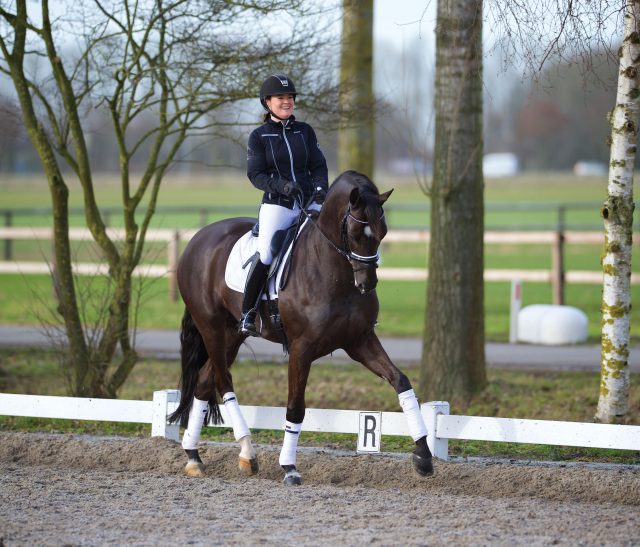
Engage Your Horse’s Mind
In this excerpt from her book How Two Minds Meet, Beth Baumert explores how, in order to attain optimal performance, we have to learn to engage the horse’s mind as well as his body.

When a horse engages his hindquarters, his hindleg joints bend, his croup lowers, he carries more weight with those hindquarters, and as a result, the forehand becomes lighter. But engagement isn’t just about the hindquarters. You also want to engage the horse’s mind. Some horses are very smart and their minds can—and like to—carry “weight.”
Halt-halts and transitions engage the horse mentally as well as physically. They say, Let’s do this now! Riders who are leaders always have something interesting to say to their horses. But some riders complain that their horses don’t pay attention to them. “He’s not listening to me,” is the common lament. Why isn’t the horse listening? Consider these ideas from your horse’s point of view:
- Are your messages clear? Some riders may not be giving the message in a clear way because it is cluttered with unintentional aids or aids given at a time when the horse can’t respond. That’s often because the rider’s position and her aids need to improve. For example, maybe she is unintentionally kicking the horse every step. That’s not uncommon, but when she wants to give a leg aid, the horse doesn’t “hear” it. Maybe the timing of the rider’s aids is off because she’s not in her horse’s rhythm. Maybe her hands are unsteady so the horse is never completely relaxed in his topline and accepting the bit. Some riders, especially those who are very cerebral, think they are giving physical aids when they are not. Whereas a rider’s aids are intended to be subtle, they might need to be louder if the horse doesn’t hear them. When a rider’s skills need to be honed, the best the rider can do is become aware of these shortcomings and work to improve them. When this is the case, a horse often somehow understands and meets the rider halfway.
- Does your horse think you’re fun to be with? Some riders are just plain entertaining, and horses would agree. Others are boring because the language of their aids doesn’t send an interesting message. They don’t challenge themselves to be the leader, and are satisfied with going around and around (and around) in a less-than-ideal balance. Maybe they are not engaging their own minds. When you ask your horse interesting questions, every ride is like a game and he has fun. He looks forward to his rides, which challenge him.

Photo by Arnd Bronkhorst
- Does he think you’re fair? Sometimes a rider may not have a pleasant message for her horse because the emotion behind it isn’t positive. This rider may not be respectful of the horse’s nature. She might not honor all his innate needs that were described earlier. Fear and love can’t reside in the same place. Ideally, the rider’s emotion is a subcategory of love, and she is able to express her message—even a strong message—in a way that honors the nature of the horse.
- Is he physically comfortable? As you know, horses can’t concentrate on the work if physical comfort is an issue. Check out his teeth, feet, eyes, muscles, and joints. Pay attention to clues that he may be giving you.
Some trainers say, “The way to a horse’s body is through his mind.”And others say, “The way to a horse’s mind is through his body.” Which is it? Either can be argued. It can be said that without physical harmony, there can be no mental and emotional comfort, which is why I wrote the book about the physical aspects of training first. But it is also true that you can’t train a horse well unless you’re his friend to begin with.
This excerpt from How Two Minds Meet: The Mental Dynamics of Dressage by Beth Baumert is reprinted with permission from Trafalgar Square Books. You can purchase the book here.






